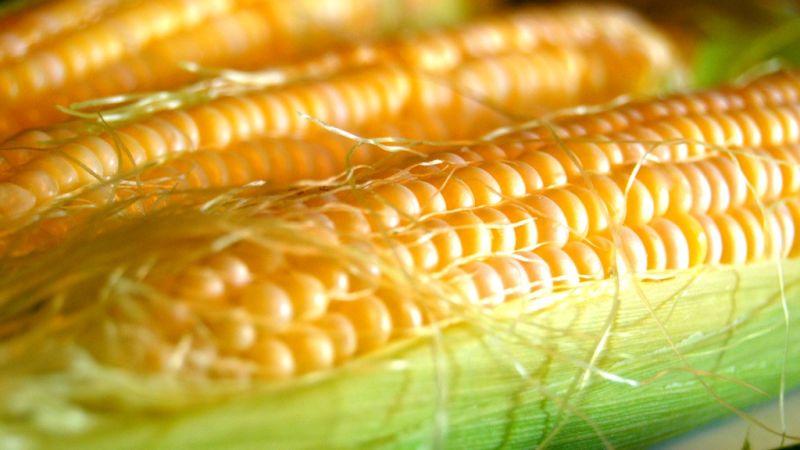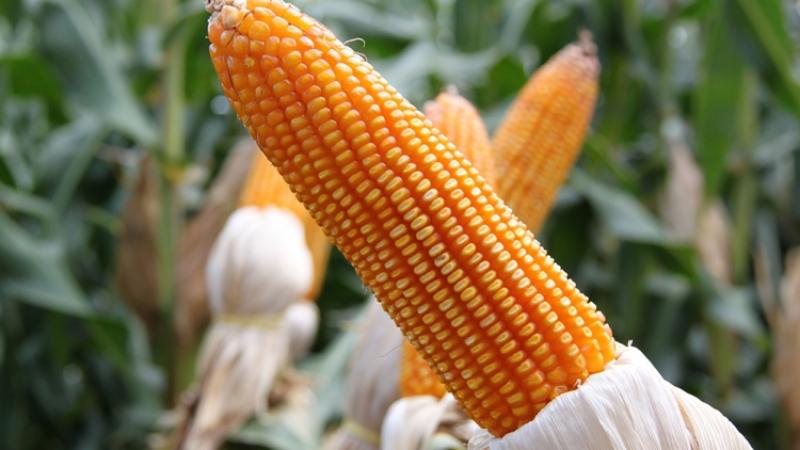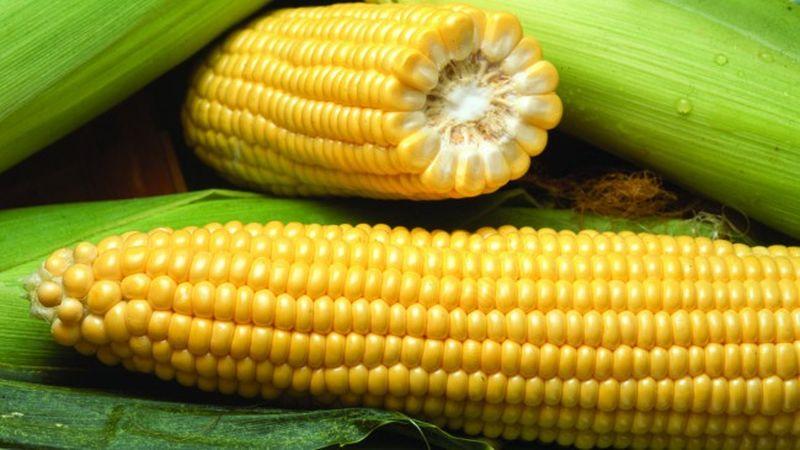What is corn - is it a fruit, cereal or vegetable: we understand the issue and study the queen of the fields in more detail
Corn is a widely cultivated plant. In terms of consumption in the world, only wheat and rice can compete with it. Mexicans are the record-holders in corn consumption: one inhabitant of this country eats about 100 kg per year. Habitual culture raises many questions: corn is a fruit or vegetable, legumes or not, where it comes from. You will learn about everything from our article.
The content of the article
What is corn
Corn is a herbaceous plant with a developed root system, it can reach up to 4 m in height. Scientists believe that this is one of the most ancient bread plants.
Fruit, vegetable, cereal, or legume?
To understand what corn is - a vegetable, fruit, cereal or bean, you need to understand in detail what exactly is meant by all these concepts.
Vegetable is a culinary term for the edible part of a plant. These can be lettuce-like leaves, stems (celery), roots (beets), and flowers (cauliflower). The main thing is that these parts do not have seeds.
A fruit is an edible fruit. Serves for the formation, protection and distribution of the seeds contained in it.

Cereals belong to the class of monocotyledonous plants that have a number of characteristic features:
- fibrous root system;
- long and narrow leaves;
- small, inconspicuous flowers, collected in an ear;
- fruit weevil.
Beans (legumes) are dicotyledonous plants with such common features as:
- pivotal root system;
- bilateral (not radial) symmetry of the flower;
- the fruit is a bean (dry, usually polyspermous, with two valves that open after ripening, the seeds grow on these valves).
From the point of view of consumption, corn can be considered a fruit, since its fruits are used for this. Outwardly, corn belongs to the family of cereals.
Biological description
Sugar corn, in another way, maize (lat.Zea mays) is a herbaceous annual cultivated plant, belongs to the genus Corn of the Cereals family.
The root system is fibrous, well developed, extending 1-1.5 m deep. Aerial roots are formed in the lower part of the stem, which additionally nourish the plant and help keep it from lodging.
The stem is erect, knotty, up to 4 m in height and up to 7 cm in diameter. The internal cavity is filled with a loose substance parenchyma. The leaves are large, straight, can reach 1 m in length, up to 10 cm in width. The venation is parallel. The bases of the leaves are tubes covering the stem, the so-called sheaths.
The flowers are unisexual, located on the same plant. Females are gathered on the cob, surrounded by wrappers like leaves. A bunch of long pistils emerges at the top of the envelope, onto which pollen from male flowers located in panicles at the top of the stem is carried by the wind. This is how fertilization occurs and fruits are formed.
The shape of the fruit (caryopsis) is unusual for cereals. They are round or cubic. They are arranged in dense rows on the cob. Sizes, shape, color may vary for different varieties.
Brief history of origin
Based on studies of grain starch microparticles and fossil plants, American scientists have determined that corn (or rather its wild ancestor teosinte) was cultivated about 8,700 years ago in southern Mexico. Ancient corn cobs were no more than 3-4 cm in length.
From the 15th century BC maize began to spread throughout Mesoamerica. New growing conditions led to an increase in the number of varieties in the XII-XI centuries BC.
The ancient Maya cultivated different varieties of corn, differing in ear size, yield and ripening time. Maize for the Indians had the status of a sacred plant. In the Aztec religious system, the corn god Centeotl was present.
In the 15th century, corn was brought to Europe by Columbus. The Russians learned about corn during the Russo-Turkish wars over the Crimea.

Etymology
The Latin word Zea has Greek roots. This was the name of one of the widespread varieties of wheat in the Bronze-Middle Ages in Europe. In most European languages, the plant has retained its Indian name, maize. It has common roots with the word mahiz, meaning corn in the Taino language.
In Russian, the name corn is used. The origin of this word is associated with the existence in some Slavic languages of similar words with the meaning of "curly". According to another version, corn is a derivative of the Romanian cucuruz, which means "spruce cone". It is also believed that the Russian word corn is related to the Turkish kokoros (corn stalk).
Kinds
The whole variety of corn varieties is divided into 9 botanical groups, which differ in the structure of the cob and the shape of the grain.
- Siliceous (Zea mays imdurata) is one of the most popular varieties. Plants are distinguished by a small number of leaves, a powerful high stem, massive cobs. Grains are round, wrinkled, white or yellow, 70-80 hard starch. This corn is used for grain production. Flakes and sticks are made from it.
- Tooth-shaped (Zea mays indentata). This group includes late-ripening, high-yield varieties. Plants are low-leafed, have a strong stem, large cobs. The grains are large, elongated, with a characteristic indentation, making the fruit look like a tooth. Toothed corn is used as a raw material for cereals, flour, alcohol and as a fodder plant.
- Semi-dentate (Zea mays semidentata) is bred by crossing between flint and odontoid varieties. Sometimes found under the name semi-siliceous. Plants are not bushy, grown for silage and grain.
- Bursting (Zea mays everta). Plants of this group are bushy, with a large number of leaves. During the ripening process, several small ears are formed with small, even, glossy grains. There are two subgroups of burst maize: rice and pearl barley. Their names indicate the similarity of the taste of the grains to the corresponding cereals. The kernels burst when heated and are used to make popcorn.
- Sugar (Zea mays saccharata). Sweet corn varieties are quite common. Plants are bushy, form several cobs with grains containing a large amount of sugars and a minimum of starch. Mainly used in industrial production canned corn.
- Starchy (Zea mays amylacea). The oldest group of varieties. Bushy plants with a large amount of foliage are cultivated only in South America and southern North America. Grains contain more than 80% starch. Starch, molasses, flour, and alcohol are obtained from these varieties.
- Starchy sugar (Zea mays amyleosaccharata). The grains are composed of a mealy substance. Plants of this group are of no agricultural interest.
- Waxy (Zea mays ceratina). The waxy group is the most common in China. The grain consists of a two-layer tissue: an outer hard wax-like part and a mealy middle layer.
- Filmy (Zea mays tunicata). The plants of the group do not have a wide variety of varieties. Grain taste is low. They are grown because of the green mass that goes to feed livestock.
Cultivation
Corn is widely cultivated in all regions of the world suitable for farming. The plant is light-loving and thermophilic, although it is quite resistant to frost.
For cultivation in the country, dry, open areas with loose, well-fertilized soil are chosen.It is best to grow corn from seeds in warm climates. Seeds are planted in late April and early May. In the northern regions, it is recommended to use the seedling method. Landing with this method is carried out in early June.
Throughout the growing season, especially when the ears are ripe, the plants must be watered on time and abundantly. To get full ears during the flowering period, it is recommended to carry out 2-3 pollinations by shaking the flower panicles.
The crop is harvested a month after flowering, the grain reaches milky ripeness during this period.

Benefit
Corn is used in many areas of human activity. Maize is widely used for food, as a medicine in traditional medicine. Modern technologies make it possible to obtain fabrics and plastic from it.
Food
Corn is a source of carbohydrates. Fruits contain about 15% protein, depending on the variety. It is a source of vitamins B, C, D, E, K, folic acid.
Maize grains contain minerals: magnesium, potassium, calcium, iron, zinc, selenium. The ears are rich in carotenoids. 100 g of grain contains half of the required daily amount of dietary fiber. Corn and corn-based foods are gaining popularity due to the lack of gluten, one of the strongest allergens.
Medical
In folk medicine, corn takes pride of place. Practically all parts of the plant are used for medicinal purposes.
Tinctures of stigmas are used to improve the functioning of the gallbladder in cholecystitis, hepatitis and other liver diseases, as well as as a diuretic and sugar-reducing agent.
Corn oil is a source of beneficial Omega-3 fatty acids. The use of such oil in food reduces the level of "bad" cholesterol and prevents the occurrence of heart attacks and strokes.
Environmental
Due to its wide distribution and chemical composition, corn is used as a renewable raw material for the production of green plastics.
The fermentation of corn sugars produces polylactide (PLA), a biodegradable and biocompatible polymer material. It is used in food packaging and in the production of surgical sutures and pins.
Polylactide threads are used in the manufacture of fabrics. Cloths containing this polymer are well dyed, combine the advantages of synthetic and natural fibers. At the same time, they do not harm the environment, because they are biodegradable.
Read also:
Does corn contain gluten, is it in corn grits and flour ?.
Effect on the body
Due to the high content of vitamins, minerals, amino acids, corn has a beneficial effect on all human organs.

Consumption of corn:
- improves the functioning of the gastrointestinal tract;
- cleanses the body of toxins and toxins;
- lowers cholesterol levels;
- favorably affects the work of the brain;
- helps to lose weight;
- safe for diabetics and allergy sufferers.
People with increased blood clotting, prone to thrombosis and thrombophlebitis, should be wary of maize. You should not eat corn during an exacerbation of gastrointestinal ulcer disease.
Rules for selection and use
Corn goes on sale at the end of summer. You should choose the cobs wrapped in green leaves. Hair should be fresh and shiny, light yellow grains taste best. No dark spots or mildew on the cob.
Milk maize can be kept refrigerated for no more than 3 weeks. Boiled corn cobs, wrapped in cling film, can be stored in the refrigerator for several days. Frozen, boiled ears will last up to 3 months in the freezer.
Corn sticks and flakes are best chosen without additives and used with low-fat dairy products.These foods are only truly beneficial if they are actually made from grains.
Conclusion
Corn or maize can be called a fruit, but the plant is biologically related to the cereal family.
Maize cultivation began in Mexico about 9,000 years ago. Now there are many varieties of this cereal, which are divided into 9 groups: siliceous, dentate, semi-dentate, sugar, starchy, starchy-sugar, bursting, waxy, filmy.
Corn is a healthy and nutritious food product containing vitamins, trace elements, irreplaceable amino acids. Grain is widely used in medicine. This is a promising raw material for the production of biodegradable polymeric materials.